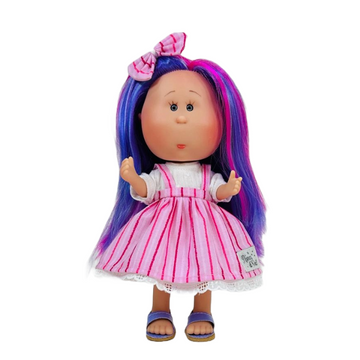Dolls And Accessories - An Overview
Dolls And Accessories - An Overview
Blog Article
An Unbiased View of Dolls And Accessories
Table of ContentsNot known Details About Dolls And Accessories Examine This Report on Dolls And AccessoriesAn Unbiased View of Dolls And AccessoriesDolls And Accessories Fundamentals ExplainedDolls And Accessories Can Be Fun For EveryoneSome Known Factual Statements About Dolls And Accessories The Basic Principles Of Dolls And Accessories
When dolls are consisted of in team play, kids exercise waiting, sharing, and paying attention to others' concepts. Whether they're acting to be a moms and dad, brother or sister, or good friend, youngsters find out just how relationships workhow to support others, solve disagreements, and look after somebody else. These very early role-play experiences end up being the groundwork for healthy and balanced relationships and connections later in life.Duplicating calming regimens with a doll (feeding, rocking, putting to bed) can help children really feel calm and safe. These soothing routines show them exactly how to self-regulate. Taking care of a doll can make a youngster really feel capable and confident - baby dolls. It provides a sense of duty and control in a globe that usually really feels unpredictable.
Dolls And Accessories Can Be Fun For Anyone
When youngsters see dolls that mirror their race, heritage, and society, it strengthens a favorable sense of identity. It says, "You belong. Your tale issues." Dolls additionally introduce youngsters to cultures outside their own, building respectful inquisitiveness and empathy for others. This is where inclusive play can bring about comprehensive areas.
As Dr. Karyn Purvis, a leader in kid growth and trauma-informed care, once claimed: This effective quote highlights how play isn't simply funit's how children learn finest. The mind wires itself via rep. Yet when a child is engaged, cheerful, and mentally linked to an activitylike doll playthe mind reinforces those links much faster and more meaningfully.
Getting The Dolls And Accessories To Work

Children need compassion, compassion, and creative imagination tooand doll play offers that. Dolls are usually a child's very first "pal," aiding them exercise relationships, construct interaction abilities, and really feel comforted.
Dolls And Accessories - Truths
Via dolls that matter. Samantha Ong Samantha Ong is the owner of Joeydolls, a Canadian-based toy brand on a mission to commemorate Asian cultures with cheerful, comprehensive play. Inspired by her own experiences expanding up without cultural depiction, Samantha makes dolls that help kids feel pleased of who they are while stimulating curiosity and compassion in others.
Playing with dolls motivates youngsters to chat more about others' thoughts and emotions, a study has actually discovered. The research recommends that playing fictional video games with dolls might assist youngsters create social skills, theory of mind and empathy.
The smart Trick of Dolls And Accessories That Nobody is Talking About
They were additionally a lot more likely to attend to the dolls in the 2nd person, speaking with them directly, whereas the personalities on the computer display they tended to refer to in the third person. No distinction was observed between children and girls."Interior state language can show that a kid is thinking of other individuals's ideas and emotions while playing with dolls," claimed Gerson.
And that they see language usage in this respect is great verification of the hypothesis."Mardell included that the searchings for ought to use to any type of kind of role-play toy, instead than being particular to Barbies."Kid commonly begin to reveal signs of interior state language around the age of 4.
The smart Trick of Dolls And Accessories That Nobody is Discussing
"It comes to be essential for making and maintaining friendships, and just how they learn from their instructors, and moms and dads."The research study likewise located that the children had actually raised mind task in the posterior exceptional temporal sulcus (pSTS) area when they talked as though their dolls had ideas and sensations. The pSTS region is believed to be associated with the advancement of social and emotional look at this website processing skills.
Childhood is not a fixed life stage; without a doubt, the interpretation, meaning and understanding of youth are all subject to alteration. By the 19th century one of one of the most extensive adjustments was the importance positioned on permitting children to experience "the care free pleasures" of childhood years through playtime tasks. Play was now taken into consideration to be a vital element of an excellent youth.
In order to totally understand the meaning of play, one have to likewise recognize the importance of the doll. Dolls are much more than toys made to delight young girls. During the nineteenth century correct playtime tasks were chosen to promote intellectual, physical or emotional growth. Dolls were particularly prominent since they were believed to promote and nurture womanly high qualities such as compassion, caring and empathy.
Unknown Facts About Dolls And Accessories

It is just via historical examinations that researchers can hope to discover and record the full series of play experiences. Chronicling these experiences, and particularly the role of dolls, is critical for providing a much more complete image of childhood throughout the 19th century. Alarcn, Sara E - dolls., "Kid's Play: The Duty of Dolls in 19th Century Childhood" (2007 )
Report this page